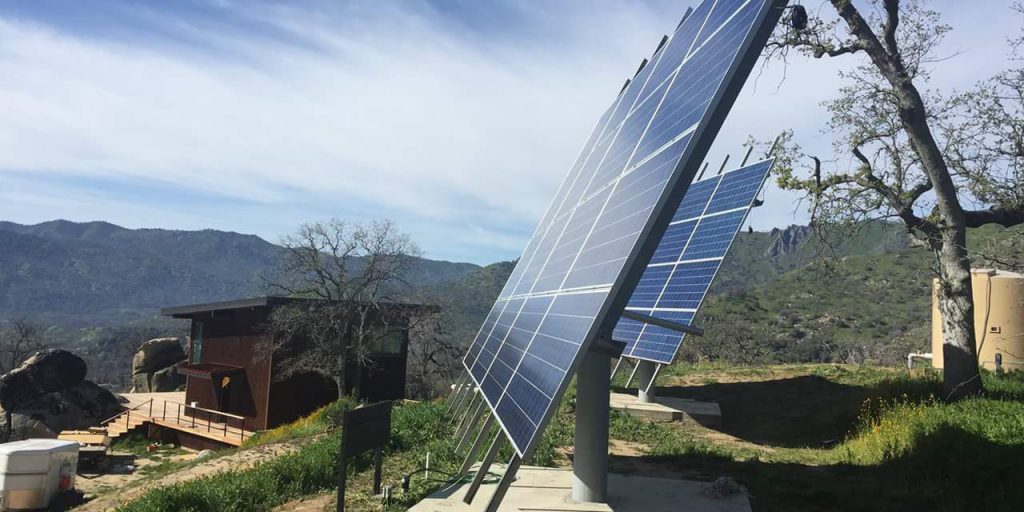Plus ça change – PV has again been identified by the International Energy Agency (IEA) as the poster boy in the world’s race to keep global warming “well below” 2 degrees celsius.
The IEA has updated its Tracking Clean Energy Progress (TCEP) report by examining 38 technologies that are key to securing the low-emission energy supply required to hit the ambitious low-carbon target signed off in the Paris Agreement in 2016.
The IEA findings may make for grim reading overall, with only four of those technologies given the green light for reining in destructive global warming, but PV power and electric vehicles (EVs) are among the few success stories – just as PV was in the original TCEP report five years ago.
The work of some 6,000 IEA researchers, the report concluded PV is on track to meet the ambitious targets of the Sustainable Development Scenario (SDS) outlined in the 2017 World Energy Outlook to achieve the rapid but achievable reduction of the world’s carbon footprint required to hit the Paris ambition.
In fact PV, and more specifically PV in China, is blazing a trail after last year's record 34% growth was twice the average 17% annual growth required annually to 2030 to achieve the SDS target.
That extra 416 TWh of PV generation amounted to almost 2% of the world’s electricity generation with the 53 GW of capacity added in China the lion’s share of the 95-98 GW added worldwide as the Communist nation accounted for more than 55% of global PV demand and boasted more than two-thirds of the world’s module manufacturing.
The IEA researchers note US capacity suffered in year-on-year comparisons after a rush to benefit from a federal tax credit in 2016 and that President Donald Trump’s tariffs on solar modules and cells may dampen demand, but were seemingly unconcerned by India potentially following suit as they noted capacity more than doubled in the nation, to 9.6 GW.
The report mentions a flat EU performance of 6 GW and a fall of 12% to 7 GW in Japan and says innovation is needed to improve high-efficiency cells, drive thin-film efficiency, reach 24% efficiency in c-Si p-type PERC and improve the recycling performance of modules.
EVs – along with lighting and data centres and networks – are also lauded by the IEA after a record 1.1 million electric vehicles were sold in 2017. That amounted to a 57% rise in the world’s passenger car stock, comfortably above the 40% rise needed annually to hit the SDS target of 14% of the world’s passenger cars running on electric by 2030, though the report’s authors note the difficulty of maintaining progress as absolute numbers rise.
China again led the way, with more than half of the new EV sales, although Norway can boast the highest per capita proportion of eco-conscious drivers. Some 370,000 e-buses hit the world’s roads in 2017 as well as 250 million electric two-wheelers, most of them – again – in China.
Popular content
The IEA notes improvements in the energy density and cycle life of EV batteries will be needed to maintain the good news story, as well as cost reductions to bring the cost of EVs close to that of traditional vehicles.
According to the report, more work is needed on the PV-related technologies of energy storage and smart grids, both of which were given an amber light, albeit with storage labelled ‘one to watch’.
The SDS target for battery storage demands 80 GW of capacity be added by 2030 and the figure remained flat at just 620 MWh last year, although there was good news in South Korea – where a favorable policy environment saw installations triple – and in Australia, the more progressive US states and Germany and Italy, the high retail price of electricity driving storage take-up in the latter two nations.
China again did its bit, with more than half of the world’s planned lithium-ion manufacturing capacity increase of 220 GWh.
But the IEA foresees a supply crunch in lithium and cobalt in the early 2020s and calls for work on increasing battery density as well as breaching the $80/kWh price floor for lith-ion and exploring lith-ion-phosphate technology.
The TCEP report notes more needs to be done to drive smart meter deployment worldwide despite China having reached almost full take-up, Japan, Spain and France being in sight of that goal and the US and EU installing meters in more than half of households. Progress in India and south east Asia has been slow but may benefit from the experience of the pioneer nations.
Elsewhere on smart grids, the report observes investment in interconnecting systems saw the amount of annual line-kilometers treble from 2016.
The world's leaders in that field? Not surprisingly it's once again China, with more than two-thirds of the world’s line-kilometers for high voltage and interconnecting capacity commissioned.
This content is protected by copyright and may not be reused. If you want to cooperate with us and would like to reuse some of our content, please contact: editors@pv-magazine.com.



By submitting this form you agree to pv magazine using your data for the purposes of publishing your comment.
Your personal data will only be disclosed or otherwise transmitted to third parties for the purposes of spam filtering or if this is necessary for technical maintenance of the website. Any other transfer to third parties will not take place unless this is justified on the basis of applicable data protection regulations or if pv magazine is legally obliged to do so.
You may revoke this consent at any time with effect for the future, in which case your personal data will be deleted immediately. Otherwise, your data will be deleted if pv magazine has processed your request or the purpose of data storage is fulfilled.
Further information on data privacy can be found in our Data Protection Policy.